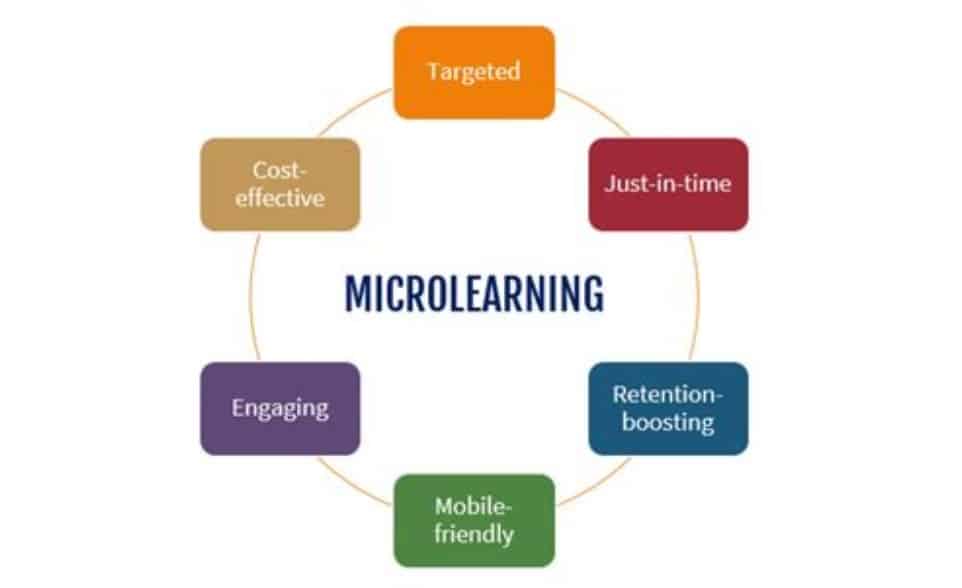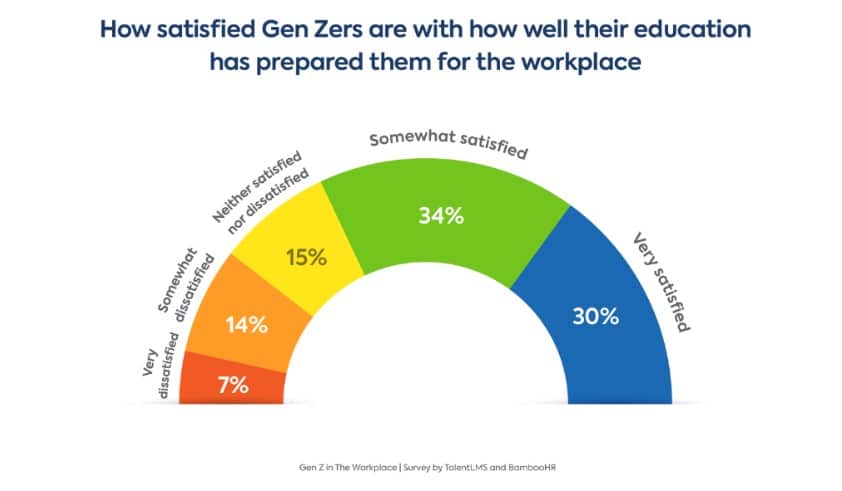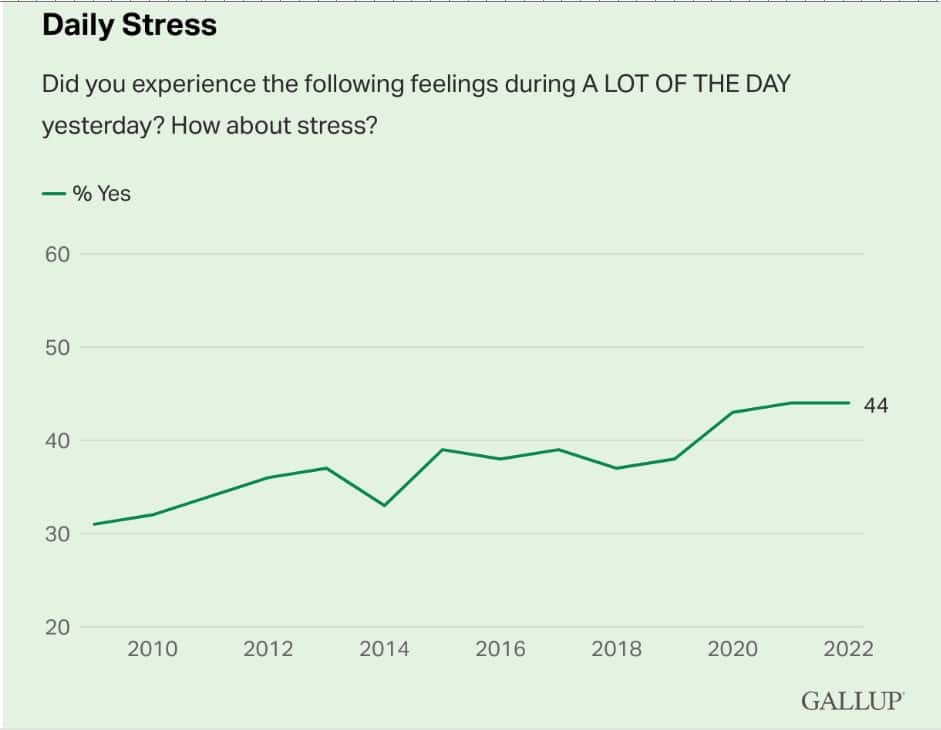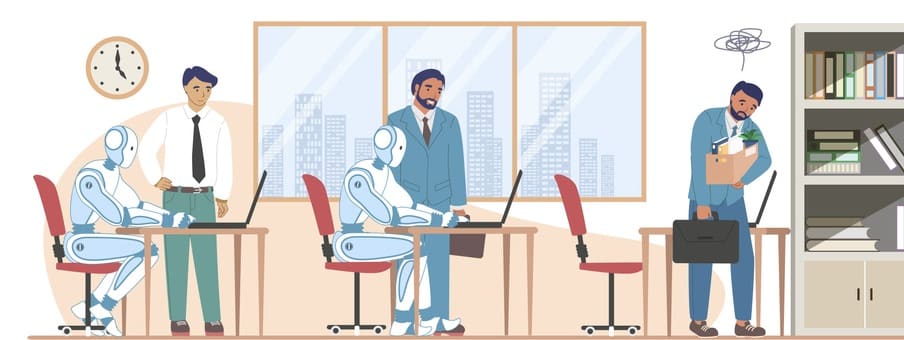The past few years of intense disruption have put companies like yours through the wringer. Yes, a global pandemic changed the way we work and conduct business—but that’s not what we’re talking about. Instead, we’re here to discuss disruptive technologies and the use of AI in the workplace.
A recent Microsoft survey found that LinkedIn US job postings mentioning “GPT” were up 79 percent from the previous year. Of those surveyed, 82 percent believed their employees would need new skills to deal with the growth of AI.
Machine learning (ML), predictive analytics, and generative AI (GenAI) and their propensity to change job roles is only one piece of the puzzle though. Have you also considered that these same tools can be used to motivate your team to develop new skills?
The importance of employee engagement
We can’t discuss skills development without first mentioning employee engagement. Employee engagement is how enthusiastic your staff feel about their jobs and the company. It’s how active and involved they are while on and off the clock.
It may seem obvious why engaged employees are better than lukewarm or disengaged ones. If people are happy to be at work, they’ll perform better, right? However, statistics show us that the ripple effect goes much deeper.

Image sourced from gallup.com
For example, a recent Gallup poll found that companies with higher engagement levels have 81 percent less absenteeism. They also enjoy up to 18 percent greater productivity.
Engaged employees are more likely to stick around too. Loyalty lessens the costs of recruitment, onboarding, and learning and development (L&D). Speaking of development…
Upskilling and reskilling
One of the primary ways to keep employees engaged is by giving them the tools to do the job. Roles will evolve along with the presence of AI in the workplace—ergo, having the right foundational knowledge and skills is part of the “tools” needed to get the job done. Organizations must thus provide adequate training and development opportunities.
So, how do organizations like yours keep loyal employees up to date with job role evolution? By upskilling and reskilling. While these terms are sometimes used interchangeably, they’re not the same.
- Upskilling focuses on strengthening the existing hard and soft skills of a team member. It’s a form of optimization whereby their most relevant skills are amplified. For example, take a content marketing manager. They need to know how to better prompt GenAI that uses natural language processing (NLP). Through training, they’re evolving their written communication skills.
- Reskilling can be a bit more complicated for employees, as it involves acquiring an entirely new skill set to change jobs. This is usually done to meet workforce demand internally. (Again, it’s better to keep engaged, loyal employees rather than hire and train new ones). In this instance, a content writer may need to reskill as an editor or SEO manager. With the writing portion being completed by AI, they’ll need skills that are present either before or after the writing process.
AI in the workplace drives new skill development
Whether it’s leveling up or acquiring new skills, AI is thus revolutionizing learning and development. Here are some of the ways it’s doing this:
1) Identifying skills gaps
Today, AI technology is helping businesses gain greater insight into skills gaps. New workforce planning solutions can gather accurate and comprehensive real-time data on employees, while AI-assisted modeling identifies employee skill levels and spots current or potential gaps.
According to the World Economic Forum (WEF) Future of Jobs Report, 60 percent of workers will require training before 2027. However, only half of workers have adequate training access.
The WEF also pinpointed the biggest areas for job creation for 2023-2027. At the top are big data analytics and climate change mitigation technologies. In the following image, the blue is the volume of job creation while the purple is the amount of predicted job displacement.

Image sourced from weforum.org
Using AI to identify future skill gaps can help you better prepare your employees for change. With greater insight, they can seek out upskilling and reskilling opportunities and take a more proactive approach to adapting their skill sets.
2) Discovering disengaged employees
Another important way to implement AI in the workplace is to identify disengaged employees.
Last year, a Gallup poll found that the percentage of actively disengaged employees was 18 percent. This was the highest it had been in over two decades. These findings correlate with the uptrend in quiet quitting.
Disengaged employees aren’t always easy to spot, and they can cost your company a lot of time and money. Fortunately, AI-produced algorithms can help managers identify signs of disengagement early on. With the help of tech like ML, they can try to nip these problems in the bud by encouraging development and offering opportunities to grow.
For example, analyzing data from a call tracking solution may provide insight into which employees are engaged or not when placing sales calls.
3) Personalizing learning and development
Your organization likely has a learning management system (LMS) in place for onboarding and training. If not, you may have manila folders full of printouts and educational materials. Either way, these approaches can be a bit of a “spray and pray.” Training materials may be suited to some employees while others find them de-motivating.
However, AI can open new and personalized learning paths for your team. This starts with a more efficient onboarding process. Some new hires may need less guidance than others. Combining machine learning with a tool like SCORM Export can speed up this process.
Similarly, AI can identify what areas a team member is competent in and which need attention. This allows a development platform to slow things down and help maintain interest. The alternative is for trainees to struggle on with their eyes glazed over and their concentration waning.
4) Empowering with microlearning

Image sourced from atomisystems.com
Part of better personalization is microlearning. Microlearning allows you to promote L&D in digestible, bite-size activities. Breaking down training into smaller chunks is more practical and inclusive for your employees. For example, when learning about voice calling etiquette, one micro-lesson could focus on how to use a headset with various devices.
Microlearning suits both part-time and remote employees. It also works well for regular, busy human beings. AI tools, such as chatbots and adaptive learning programs, can create more memorable learning experiences. For example, Synthesia lets you create high-quality, professional videos with AI avatars.
5) Foster pairing of mentors and mentees
Another way to keep employees motivated to learn new skills is to show them you care. Finding a veteran of the company to mentor new or struggling team members is the perfect way to promote skill development.
Sure, mentorships and coaching partners have always been a component of corporate L&D, but it doesn’t always go swimmingly. The difficult part is not only matching them up based on a perceived skill gap but also in terms of personality.
Luckily, AI tools are here to step in and save the day. Online platforms like Eldera, for example, use AI algorithms to pair over 60s with people aged between 5 and 18. This program has been met with great acclaim and demonstrated several health benefits.
Likewise, you can use similar services, such as MentorPRO, to promote mutually beneficial relationships in your workforce.
6) Gamification

Image sourced from talentlms.com
A workplace survey found that 36% of Gen Z feel unprepared for the workplace. Training is crucial to engaging these employees and helping them meet skill gaps, so why not try something a bit different to make this happen?
When it comes to L&D, sometimes nothing hits the spot like the thrill of playing a game. Gamification typically includes interactive elements such as:
- Badges
- Virtual or physical rewards
- Leaderboards
- Augmented reality (AR)
- Quizzes
- Puzzles
- Matching and drag-and-drop games
On its own, gamification content can reign in employees and drive engagement. One report found that 56 percent of Gen Zers would enjoy training more if it was gamified.
Again, AI can swoop in to take things to the next level. Tools like Spinify Sidekick can adapt and tailor gamification for each team member. Apps for using AI in the workplace can also help keep your team engaged and on track to learn new skills on time to meet demand.
7) Reducing stress
A 2023 survey found that 37 percent of respondents felt more anxious than in the previous year.
From a workers’ perspective, Gallup found employee stress to be at an all-time high, with 44 percent of respondents experiencing “a lot” of stress daily.

Image sourced from gallup.com
AI in the workplace can help your team manage this stress more effectively. One way it can do this is by personalizing guidance and assistance for each individual. Platforms can analyze workplace data using ML and other technologies.
AI can also make suggestions about how to improve processes or automate stress-inducing tasks. NLP technology can help with customer-facing employees too—for example, dealing with a difficult customer on the phone. It can detect sentiment and step in to transfer a call and smooth out the interaction.
Creating a more positive work environment
It’s no secret that AI is on the rise. Research predicts the growth of the market to reach nearly two trillion dollars by 2030. Adopting artificial intelligence for work processes and L&D shows your employees you’re not afraid of change.
AI learning tools also demonstrate that you value your team and want them to grow with your business. Generative AI can even improve team collaboration.
Offering opportunities for growth and using modern tech fosters a more positive work environment.
AI is our present and future
The rolling rock of AI can’t be stopped. Don’t let rumors of job replacement disengage your employees—take control of the narrative and spread the news of job creation. To settle anxieties, explain how artificial intelligence can help them.
AI in the workplace not only provides better employee education but also allows you to more easily spot workforce skill gaps. Before you know it, you’ll be leaving your competitors in the dust.








